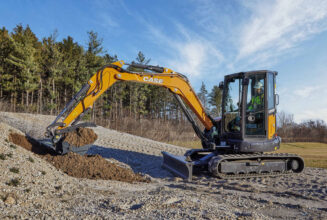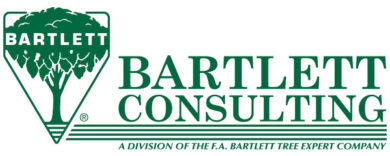Equipment Maintenance
By Tim Rohrbach
We’ve all heard the sayings: an ounce of prevention is work a pound of cure; a stitch in time saves nine. Old-fashioned clichés? Perhaps. But when it comes to maintaining your lawn care equipment, they continue to hold true.
Unfortunately, many contractors and operators overlook, neglect or just plain ignore equipment maintenance. This can lead to unexpected downtime, costly repairs, and lost revenue. But proper maintenance can help you avoid those problems. In fact, it might be the single-best thing you can do to keep your equipment running smoothly throughout the season.
And, it’s easy. Performing a bit of simple, routine upkeep on your lawn care equipment will save you time and money. As summer winds down, here are six key tips to keep in mind this fall and next spring:
Service intervals
It’s essential you know the service intervals of your equipment. These are important, as they tell you what point in time you’ll need to carry out a particular service operation. If you’re not sure what the intervals are, take a look around in the mower’s engine compartment and look for a decal. Or consult your owner’s manual.
If you recently bought a new piece of equipment, the first five hours after a machine is run are critical. Be sure to change the oil, tighten bolts, and familiarize yourself with the internal workings of the mower.
It’s also important to record your service. Proper service is important for keeping the machine running smoothly, but it affects the value of the machine. A log book will help keep track of all maintenance – what was completed and when it was done. When the time comes to sell or trade-in your equipment, the buyer will see it was well maintained <dash> thus increasing the machine’s value.
Cleanliness
It sounds simple, but cleaning your machine clean will go a long way in keeping it in service. First, cleaning the machine helps prevent rust and corrosion. On a clean piece of equipment, it’s easy to see any parts that might need attention — such as loose bolts — or if any oil, gas or fluids are leaking. If the machine is caked in grass clippings or mud, it will be extremely difficult to find the source of any leaks, and you might not even detect them at all. A shiny machine presents a positive image to your customers, and will also aid in the machine’s resale value when the time comes.
This doesn’t mean you need to scrub machines down every day. If your crews keep an air compressor on their trucks, they can simply blow off any collected dirt or grass.
Lubrication
When reviewing the owner’s manual, understand what parts the manufacturer recommends be lubricated. How much and what kind of oil, grease and coolant will be specked out in the owner’s manual. Keep these fluids in the shop and on your truck. It is important to use the manufacturer-recommended fluids and lubricants, as they were designed to perform to the manufacturer’s specification. Also, be wary of any machines claiming to be “self-lubricated,” as this can indicate that the machine is not made for the rigors of commercial use.
Mower deck
The most important aspect of a mower is the deck, and the most important part of the deck is the blades. Sharpened blades are productive blades. If the blades aren’t sharp, they will rip and pull at the turf, affecting its overall look and health. Consider sharpening your blades every one to three days, depending on use. If the blades are beyond repair, then they should be replaced.
Not all blades are alike. Mulching blades are specifically designed to cut and re-cut grass clippings into fine particles, which has fertilization benefits for the grass. High-lift blades discharge grass over a wide area and help grass stand up. But they require more effort, and more fuel, for the engine to turn them. Low-lift blades are ideal for areas with thin grass.
Beyond the blades, there are several other areas of the mower deck that need your attention. Be sure to keep the belt taut and in good condition — look for fraying or wear that changes the belt’s profile. You also don’t want any loose cords or chunks of the belt missing, and the belt should run smoothly when operating the deck, so be sure to replace them when needed. The mower deck spindles are important to keep in good condition too. These should be lubricated on a daily basis.
When operating a mower, the height of cut plays a key role in the final product. It’s essential this height is correct as it will help maintain a healthy and good looking lawn. Anti-scalp wheels on the mower deck will also keep the deck from falling to the ground and damaging turf.
Utilize technology
Laptops, tablets, smart phones and the Internet allow contractors to be connected at all times. Why not utilize these tools to their fullest extent and help maintain your equipment? Manufacturers’ websites and industry software are great resources for information. Along with the dealer, online resources can provide the ability to locate and order parts, check on stock status, and keep track of maintenance records.
Storage
Unless you are in Florida or a few other parts of the country, the lawn maintenance season will come to end and you will need to store your equipment. Proper storage will ensure your equipment is ready to roll the following spring. There are a few easy tasks to complete before packing equipment away for a few months:
- Wash all equipment to remove dirt buildup
- Lubricate and cover grease fittings
- Add fuel stabilizers or remove fuel
- Change engine oil
- Check coolant if your equipment is liquid cooled
- Check tire pressure and correct, if needed
- Remove battery, cleanup terminals and charge battery in the off-season
If done properly, regular maintenance will prolong the life of your equipment and give your fleet the extra boost it needs throughout the year. These simple tips are easy to execute in the shop or on the road. You’ll be surprised with how much time and money you will save.
Tim Rohrbach is a John Deere product support specialist.



